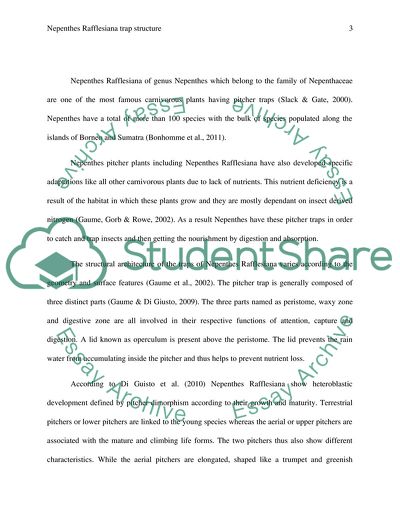Cite this document
(The Attraction System Adopted by the Pitcher in Nepenthes Rafflesiana Essay Example | Topics and Well Written Essays - 1500 words - 1, n.d.)
The Attraction System Adopted by the Pitcher in Nepenthes Rafflesiana Essay Example | Topics and Well Written Essays - 1500 words - 1. https://studentshare.org/biology/1759980-nepenthes-rafflesiana-trap-structure
The Attraction System Adopted by the Pitcher in Nepenthes Rafflesiana Essay Example | Topics and Well Written Essays - 1500 words - 1. https://studentshare.org/biology/1759980-nepenthes-rafflesiana-trap-structure
(The Attraction System Adopted by the Pitcher in Nepenthes Rafflesiana Essay Example | Topics and Well Written Essays - 1500 Words - 1)
The Attraction System Adopted by the Pitcher in Nepenthes Rafflesiana Essay Example | Topics and Well Written Essays - 1500 Words - 1. https://studentshare.org/biology/1759980-nepenthes-rafflesiana-trap-structure.
The Attraction System Adopted by the Pitcher in Nepenthes Rafflesiana Essay Example | Topics and Well Written Essays - 1500 Words - 1. https://studentshare.org/biology/1759980-nepenthes-rafflesiana-trap-structure.
“The Attraction System Adopted by the Pitcher in Nepenthes Rafflesiana Essay Example | Topics and Well Written Essays - 1500 Words - 1”. https://studentshare.org/biology/1759980-nepenthes-rafflesiana-trap-structure.


